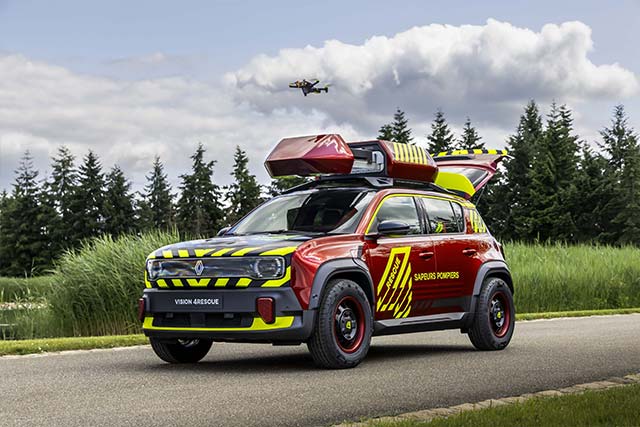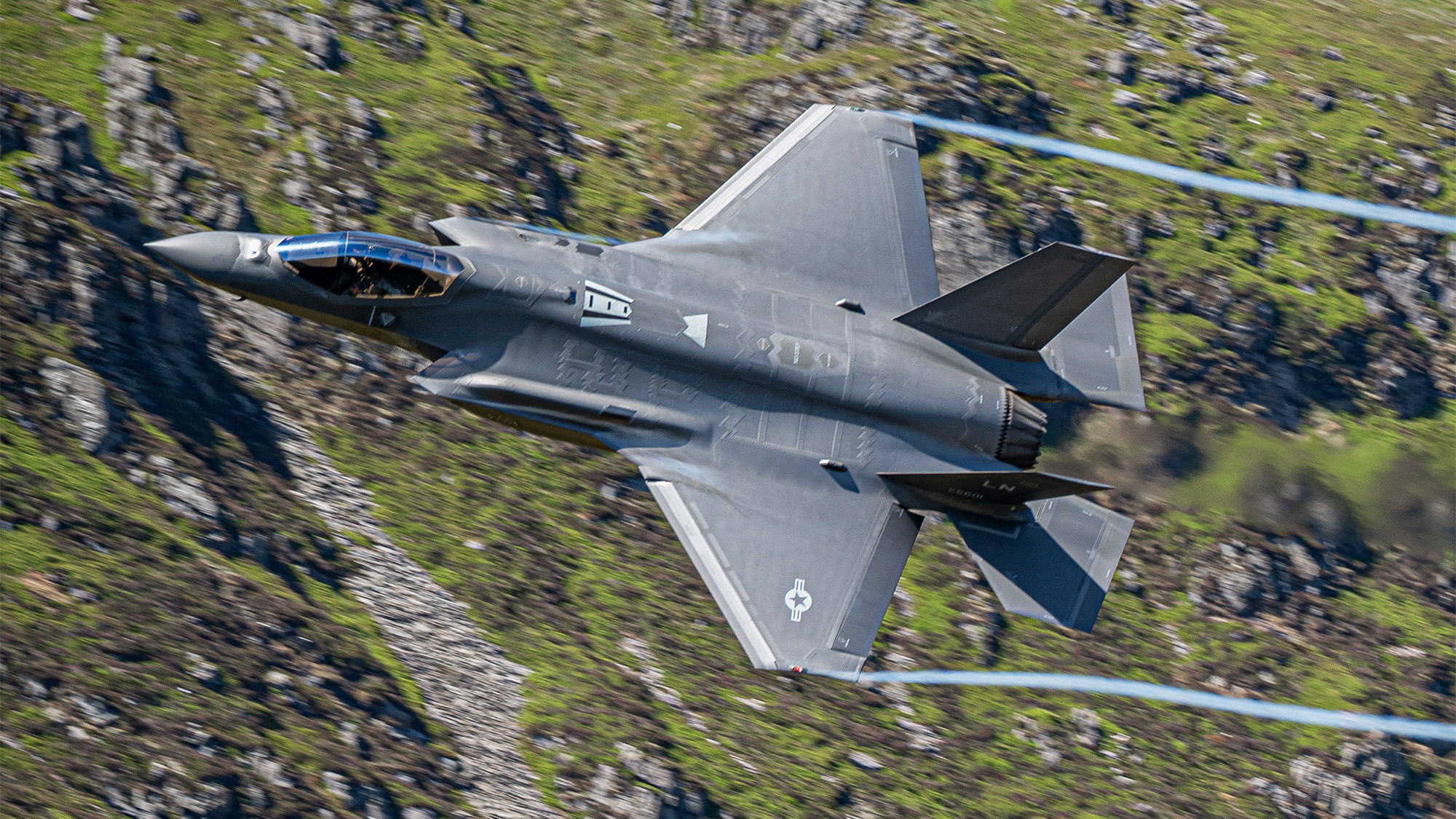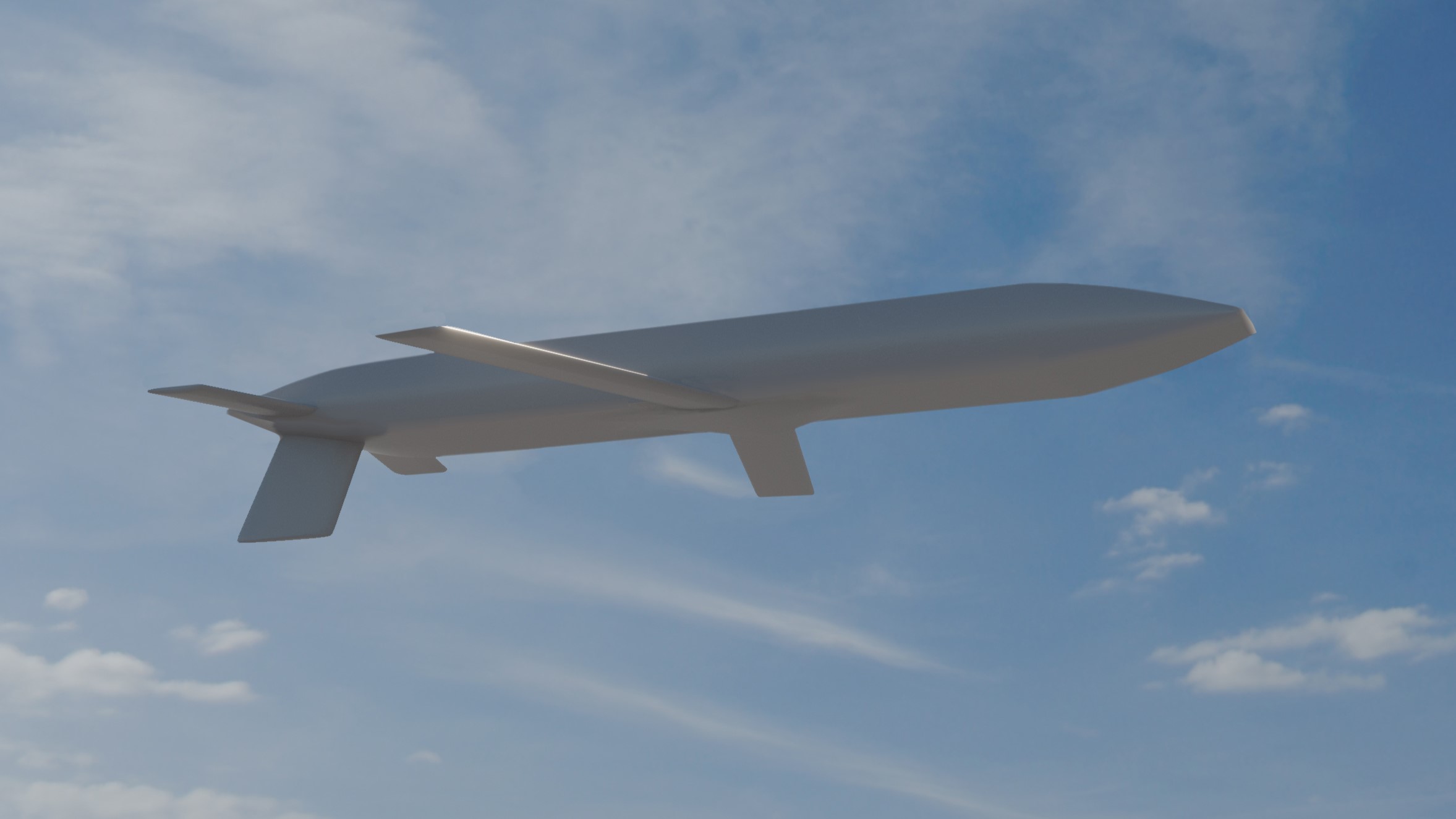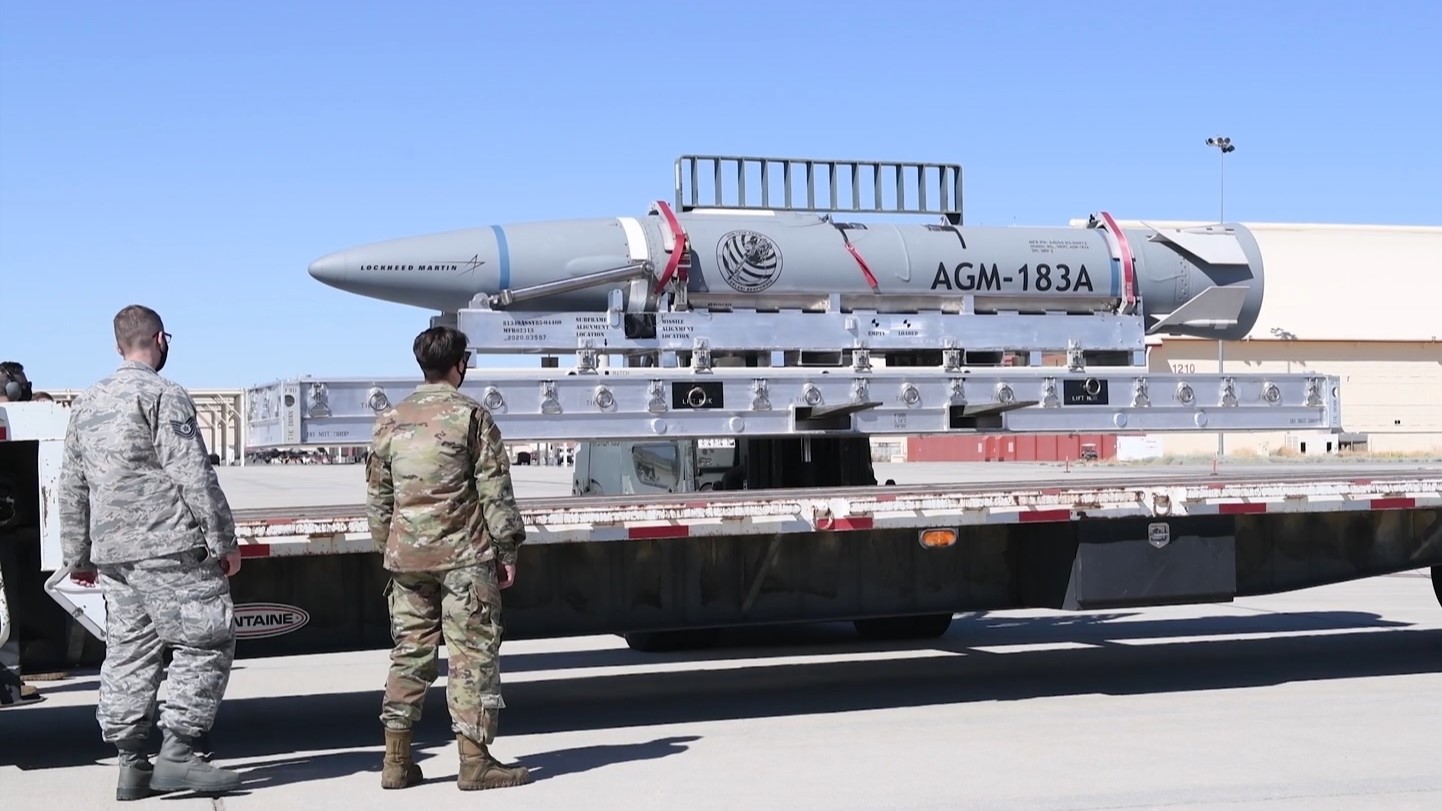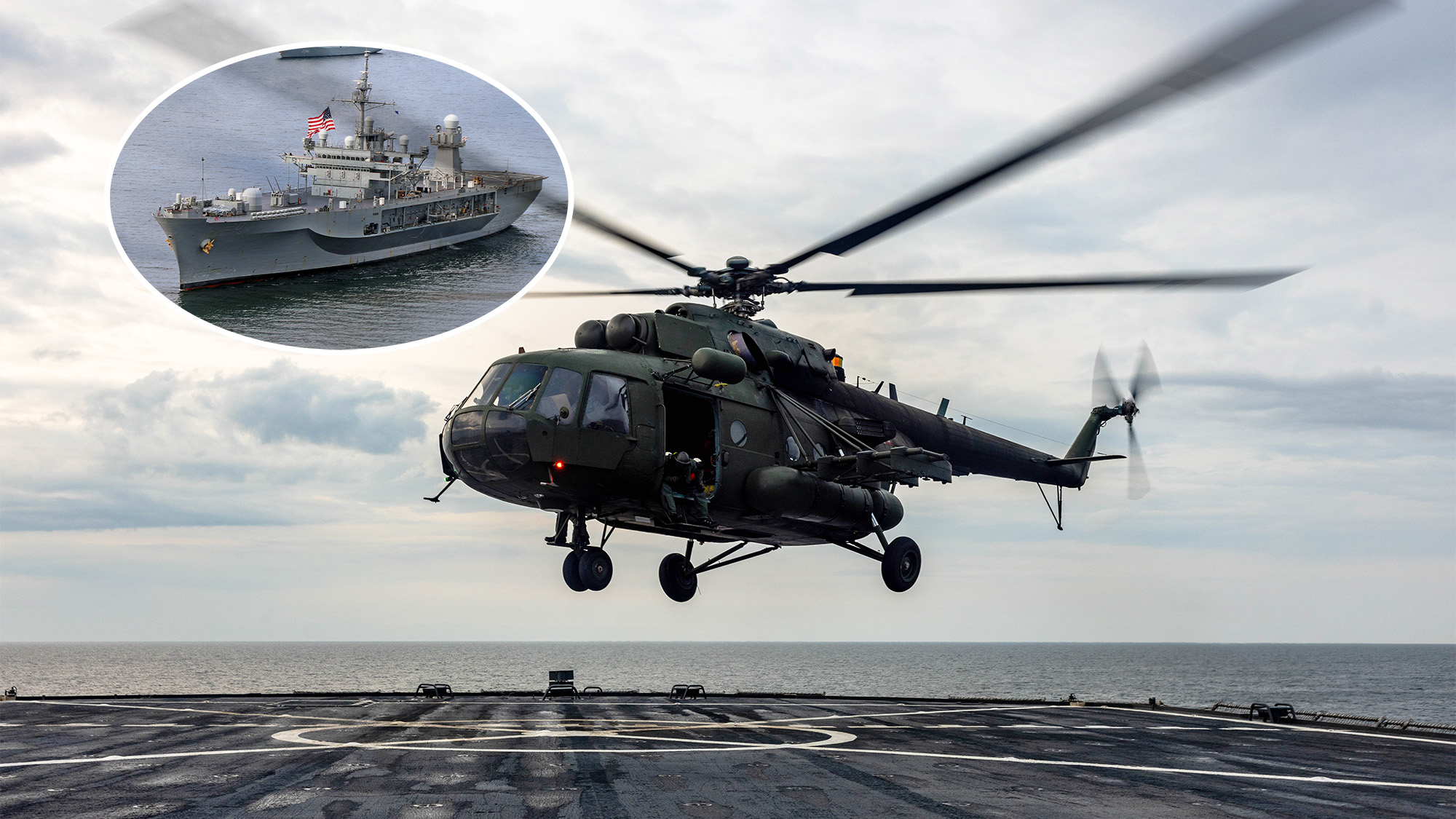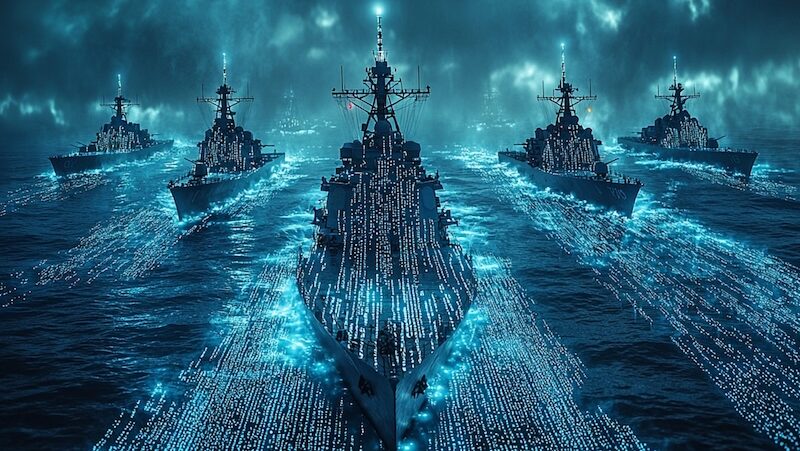Uncrewed battle groups? DARPA, admirals offer glimpses of the Navy’s robotic future
The pace of technology—and the realities of industrial capacity—are opening naval minds to the possibilities.

“There’s gonna be a lot of experimentation” in design and operation, Avicola said Tuesday at the AWS Summit in Washington, D.C. “If I make the vehicle look like this, and I make the ship look like that, how does that pair? And how do I do the logistics? How do I do the refueling? How do I do the assured comms between those platforms?”
Avicola’s vision is a lot more robo-centric than those offered by Navy leaders, who have generally tempered expectations around replacing manned vessels with uncrewed ones. In 2020, for example, acting Navy Secretary Thomas Modly suggested that autonomous capabilities might actually increase the need for manned surface vessels.
But the pace of technological advance—along with the high cost and insufficient industrial capability to build a manned fleet to meet service goals—are changing that equation.
Avicola works in DARPA’s Tactical Technology Office, which in February completed a prototype 180-foot robotic ship, the Defiant, as part of its No Manning Required Ship, or NOMARS, program. Still, he remains agnostic about what future vessels might ultimately look like. He acknowledged that the barriers to fielding robotic warships are not only bureaucratic but also practical.
For example, if robot ships are to gain commanders’ confidence, they must be able to get themselves back to port after damage or malfunction.
“How do you make sure when it goes to sea, if it starts breaking down, it can still get home on its own so you don’t have to divert assets to tow it back?” he asked. “If you have an autonomous ship and it's working with the destroyer, and the autonomous ship breaks, and the destroyer has to go off-mission to escort or tow that ship home—guess what? [The Navy] isn’t going to buy any more autonomous ships for decades.”
Another consideration: while loading robot ships with missiles and sending them out alone may sound like a fast way to project force, potential adversaries might have fewer reservations about seizing them. That’s why, at least for now, intelligence and surveillance payloads are a safer bet.
“If somebody boarded the ship and took the payload, you could live with it. If you're carrying missiles, you may not want—or Congress might not want—that ship to be boarded,” Avicola said.
But such vessels could still carry weapons as part of a larger, mixed group that includes manned platforms like the Arleigh Burke-class guided-missile destroyers.
“Pretty much anything you can think of that would augment the battle group, you can deploy on a small vessel,” Avicola said. “From that perspective, I don’t need to take a $20 million ship and put an Aegis radar system on it, right? I can still keep the DDGs I have now for that purpose, but I can virtualize the weapon systems so that those off-board missile systems can be commanded remotely from the DDG, seamlessly.”
In this concept, the uncrewed vessels would be auxiliary magazines, point defense outposts, electronic-warfare platforms—sailing autonomously but under the human command of the battle group leader.
Some of the uncrewed vessels might even be submarines—if the Navy can overcome the towering technical difficulties of underwater communications, said Rear Adm. Douglas Perry, program executive officer for undersea warfare systems. Unlike advanced aerial drones that can press an attack even after losing its link to an operator, the full value of autonomous undersea systems depends on remaining in contact with the various vessels of a battle group, Perry said.
Communicating underwater remains a major challenge—submarines still have to rise to periscope depth to send or receive most transmissions.
“We’ve definitely made quite a few advances in the past five to seven years,” he said, including techniques that use the sea floor, the water column, or the air-water interface as communications pathways. “I see that continuing.”
Vice Adm. Robert Gaucher, who leads the Navy’s submarine forces, said the service is increasingly willing to accept the risks associated with unmanned experimentation—especially the risk of losing test platforms. He cited a yearlong effort to launch and recover an underwater drone from a submarine.
“We’ve been trying to do this for a long time. It’s a hard challenge because the submarine’s moving, ocean currents are moving. You’re trying to put a 12-inch-diameter vehicle into a 21-inch-diameter tube, so there’s not a lot of clearance.”
The Navy reported a successful recapture of the drone last month—but it took 30 tries, Gaucher said.
“You know, at the lower levels, the folks are all worried that something might not work, right? ‘I’m going to get in trouble. Something’s going to go wrong.’ And we sometimes just have to say, ‘It’s worth the risk, because we have got to get the learning done’.” ]]>
























